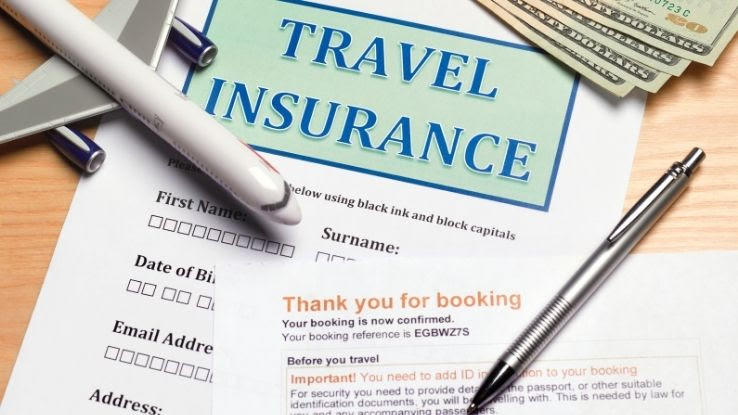Our Pacific Prime Diaries
Our Pacific Prime Diaries
Blog Article
An Unbiased View of Pacific Prime
Table of Contents4 Easy Facts About Pacific Prime ShownLittle Known Questions About Pacific Prime.A Biased View of Pacific Prime10 Easy Facts About Pacific Prime Described
In most states, the insurer is required to send you a copy of the changes to your policy. It is crucial that you check out Recommendations or Motorcyclists so you recognize how your policy has changed and if the policy is still sufficient to meet your demands. To acquire a copy of your insurance plan, please contact your insurance agent or firm.
The Institute of Medication (IOM) Board on the Effects of Uninsurance launches an extended evaluation of evidence that addresses the value of medical insurance coverage with the publication of this record. Insurance coverage Matters is the first in a collection of 6 reports that will be released over the next two years documenting the fact and repercussions of having an estimated 40 million individuals in the United States without health insurance protection.
:max_bytes(150000):strip_icc()/terms_i_insurance_FINAL_-3556393b3bbf483e9bc8ad9b707641e4.jpg)
See This Report about Pacific Prime
The goal of this collection of researches is to refocus policy attention on a longstanding problem. Complying with the lengthiest financial growth in American history, in 1999, an estimated one out of every six Americans32 million adults under the age of 65 and more than 10 million childrenremains without insurance (Mills, 2000).

Ten percent of the populace make up 70 percent of healthcare expenses, a correlation that has continued to be constant over the past 3 years (Berk and Monheit, 2001) - global health insurance. Hence medical insurance remains to offer the feature of spreading out danger also as it increasingly finances regular care. From the perspective of health and wellness treatment suppliers, insurance coverage lugged by their individuals assists protect a profits stream, and areas take advantage of financially feasible and secure health treatment specialists and institutions
Government offers medical insurance to populaces whom the personal market may not serve successfully, such as handicapped and senior citizens, and populations whose access to healthcare is socially valued, such as kids and pregnant women. The supreme ends of medical insurance coverage for the specific and areas, consisting of office neighborhoods of workers and employers, are enhanced wellness end results and high quality of life.
All About Pacific Prime
Employees rank medical insurance first without a doubt in relevance among all the benefits provided in the office (Salisbury, 2001). There have been sizable investments of personal and public funds to give wellness insurance policy, numerous individuals still have no insurance coverage. In spite of extensive reporting of survey findings and healthcare research results, the basic public remains confused and misinformed regarding Americans without medical insurance and the ramifications of doing not have coverage.

Without doubt, the complexity of American healthcare financing devices and the riches of resources of details contribute to the general public's confusion and skepticism concerning health and wellness insurance policy data and their interpretation. This record and those that will follow aim to distill and provide in conveniently understandable terms the considerable research that bears upon concerns of medical insurance coverage and its relevance.
Fifty-seven percent of Americans polled in 1999 believed that those without health and wellness insurance policy are "able to obtain the treatment they require from doctors and health centers" (Blendon et al., 1999, p. 207). In 1993, when national interest was focused on the issues of the without insurance and on pending healthcare regulations, simply 43 percent of those polled held this idea (Blendon et al., 1999).

They also get fewer preventative services and are much less likely to have normal take care of persistent conditions such as high blood pressure and diabetes mellitus. Persistent diseases can cause costly and disabling difficulties if they are not well managed (Lurie et al., 1984; Lurie et al., 1986; Ayanian et al., 2000). One nationwide study asked more than 3,400 grownups regarding 15 highly severe or dark problems.
The smart Trick of Pacific Prime That Nobody is Talking About
Additional proof exists later on in this phase in the conversation of insurance policy and access to wellness care. https://www.cheaperseeker.com/u/pacificpr1me. People without medical insurance are young and healthy and balanced and select to go without coverage. Nearly half (43 percent) of those evaluated in 2000 believed that individuals without health and wellness insurance are most likely to have health issue than individuals with insurance
Citizens and plan manufacturers in focus team discussions characterize those without insurance coverage as youngsters that have the chance to be covered and feel they do not need it (Concierge Novelli, 2001). Contrasted to those with at least some private insurance coverage, the without insurance are much less most likely to report being in superb or great health (Company for Medical Care Research and Quality, 2001).
RESOURCE: Facility for Price and Financing Research Studies, Agency for Medical Care Research Study and Quality, based upon MEPS data. Young person in content between 19 and 34 are even more likely to do not have medical insurance than any type of other age team. This is chiefly because they are much less often eligible for employment-based insurance coverage due to the nature of their work or their brief period in it.
The perception that people without insurance policy have better-than-average wellness adheres to from confusing the relatively young age profile of the uninsured with the much better health and wellness, on standard, of younger persons. This obscures the link between health standing and medical insurance. For those without accessibility to work environment medical insurance, bad health and wellness is a prospective obstacle to buying nongroup insurance coverage since such protection may be extremely valued, leave out preexisting conditions, or be merely unavailable.
Report this page